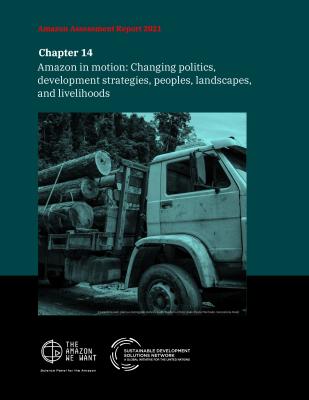This chapter reviews the often-invisible, powerful processes that drive social and ecological change in the Amazon, and the diverse peoples who inhabit its landscapes. It explores the large-scale development ideologies of modernization, and the policy tools that were deployed to carry them out. Outlining general periods of macro policy shifts, it shows the evolution of the framework for today's complex interactions between large-scale agroindustry, mining, and hydrocarbons; diverse small-scale livelihoods; the clandestine and illicit economies of land grabbing, gold, coca and timber; and their operation in globalized and regional economies. While Pan-Amazonian governments have oscillated between authoritarian and more or less democratic forms of governance since the mid-20th century, more democratic transformations and trade have led to interactions among a wide array of new civil society actors; including non-governmental organizations (NGOs), social movements, rural syndicates, and urban social movements; and powerful actors such as national and international technical, financial, and corporate groups and international conservation organizations. New international sources of funding expanded well beyond multilateral or traditional bilateral aid; this includes financing from China and hedge funds, and new forms of both informal and corporate production lending. Integration into numerous globalized markets and finance have had enormous effects on Amazonian politics and economies at all scales. These dynamics have generated new kinds of policies, political framings, institutions, and economies, and restructured old ones; reshaped forms of urbanization, settlements, and land regimes; and stimulated extensive and controversial infrastructure development. On the ground, diverse Amazonian peoples have largely suffered the impacts of these processes, and have continued to adapt to changing circumstances while fighting to advance their own proposals for alternative forms of Amazon conservation and development.



